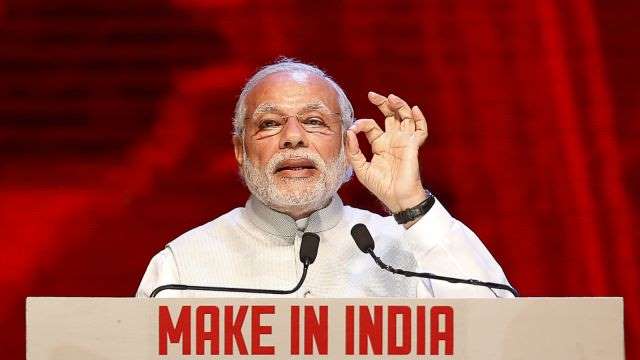February 29, 2016
NEW DELHI – From a global economic standpoint, 2016 has begun on a subdued note, with recessionary trends visible across the world. In contrast, the Indian economy stands as the only silver lining.

February 29, 2016
NEW DELHI – From a global economic standpoint, 2016 has begun on a subdued note, with recessionary trends visible across the world. In contrast, the Indian economy stands as the only silver lining.

So, while the global economy is expected to grow at about 3.5%, India’s is likely to expand at more than double that rate at 7.5%—the fastest amongst major economies.
Some credit for this growth, perhaps, should go to the investment-friendly initiatives of the Narendra Modi government—Make in India, Skill India, Digital India, and Startup India. These have the potential to boost domestic manufacturing, facilitate foreign investment, foster innovation, enhance skill development, and create job opportunities.
The e-commerce and digital economy space too have seen extraordinary growth, and are expected to bring in more innovation. All these initiatives have attracted a range of international investors to participate in the Indian growth story.
Yet, implementation has not been easy. So, how can India push its economy into a growth trajectory of over 9%?
With the Modi government presenting its third budget today (Feb. 29), there are significant expectations. Tax reforms, in particular, will be a key aspect aiding business growth and furthering the fragile recovery underway in Asia’s third-largest economy.
While many critical aspects have been addressed, more specifically, on retroactive tax levies, it is the right time to reform tax laws to boost growth.
A look at the reform measures undertaken so far does indicate the government’s resolve to institute a non-adversarial and predictable tax regime. But the focus also needs to be on simplifying setup and compliance requirements for new businesses, with a system of single-window clearances, and having exceptions-based revenue audits rather than the present system of scrutinizing any and every entity, irrespective of its size or nature of transactions.
Last year, a decision to reduce the corporate tax rate to 25% (from 30%) over the next four fiscal years was announced, although there was no immediate such reduction in fiscal 2016. There is a pressing need to provide a clear road map for this.
Alongside, the government has unveiled one to phase out tax incentives by March 31, 2017. The timing of such an announcement may not be appropriate, specifically for tax incentives available to special economic zones (SEZ) and weighted deduction for research & development. That’s because these incentives will act as stimuli to policies such as “Make in India.”
It is also perhaps time to rationalize the minimum alternate tax (MAT) regime, since doing away with it entirely will support the SEZ initiative. The key concern is that the current MAT rate of close to 21% erodes a significant amount of the tax benefits provided to SEZs.
Moreover, there is an urgent need to simplify tax provisions, as recommended by the Justice R. V. Easwar Committee in January 2016. These include the enforcement of e-audits, deferment of the income computation and disclosure standards, simplifying procedures to obtain a lower rate of withholding tax orders, and tax refunds, among others. These measures are (relatively) easier to implement and can bridge the trust gap between the Indian tax bureau and taxpayers, and make it easier to do business.
Although the government has taken a step in the right direction to de-link tax collection targets for performance appraisal of the tax bureau, which should help in containing aggressive audits, there is a pressing need to increase the benches of the Authority for Advance Rulings, so as to provide speedy dispute resolution.
This Budget could also showcase the government’s intent to introduce a framework for Base Erosion and Profit Shifting (BEPS), a global initiative that lists 15 focus areas for change in international tax rules and tax treaties. The BEPS initiative aims to ensure that profits are taxed where the economic activities generating such profits are performed and where the value, in substance, is created.
Given the BEPS development, the government may consider deferring the introduction of the General Anti-Avoidance Rules (GAAR) at least until the economy is firmly back on track. GAAR is anti-tax-avoidance rule that empowers the tax bureau to deny benefits in situations where they believe transactions have no commercial substance/purpose other than to avail tax benefits.
There are also legislative delays that are taking their toll. The postponement in the roll out of the goods & services tax, the government’s withdrawal of the Land Acquisition ordinance, and uncertainty on labor reforms need to be quickly addressed.
Indian may look like an oasis of opportunity amidst the global gloom. But timely reforms are required to push India’s growth story—from simply being good to decisively great.







































































































